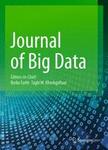版权所有:内蒙古大学图书馆 技术提供:维普资讯• 智图
内蒙古自治区呼和浩特市赛罕区大学西街235号 邮编: 010021

作者机构:Koneru Lakshmaiah Educ Fdn Dept Comp Sci & Engn Guntur Andhra Pradesh India
出 版 物:《JOURNAL OF BIG DATA》 (J. Big Data)
年 卷 期:2021年第8卷第1期
页 面:1-20页
核心收录:
主 题:Deep learning Coverage criteria Optimization algorithm Adversarial example Software testing
摘 要:A new data-driven programming model is defined by the deep learning (DL) that makes the internal structure of a created neuron system over a fixed of training data. DL testing structure only depends on the data labeling and manual group. Nowadays, a lot of coverage criteria have been developed, but these criteria basically count the neurons quantity whose activation during the implementation of a DL structure fulfilled certain properties. Also, existing criteria are not adequately fine-grained to capture delicate behaviors. This paper develops an optimized deep belief network (DBN) with a search and rescue (SAR) algorithm for testing coverage criteria. For an optimal selection of DBN structure, the SAR algorithm is introduced. The main objective is to test the DL structure using different criteria to enhance the coverage accuracy. The different coverage criteria such as KMNC, NBC, SNAC, TKNC, and TKNP are used for the testing of DBN. Using the generated test inputs, the criteria is validated and the developed criteria are capable to capture undesired behaviors in the DBN structure. The developed approach is implemented by Python platform using three standard datasets like MNIST, CIFAR-10, and ImageNet. For analysis, the developed approach is compared with the three LeNet models like LeNet-1, LeNet-4 and LeNet-5 for the MNIST dataset, the VGG-16, and ResNet-20 models for the CIFAR-10 dataset, and the VGG-19 and ResNet-50 models for the ImageNet dataset. These models are tested on the four adversarial test input generation approaches like BIM, JSMA, FGSM, and CW, and one DL testing method like DeepGauge to validate the efficiency of the suggested approach. The simulation results proved that the proposed approach obtained high coverage accuracy for each criterion on four adversarial test inputs and one DL testing method as compared to other models.